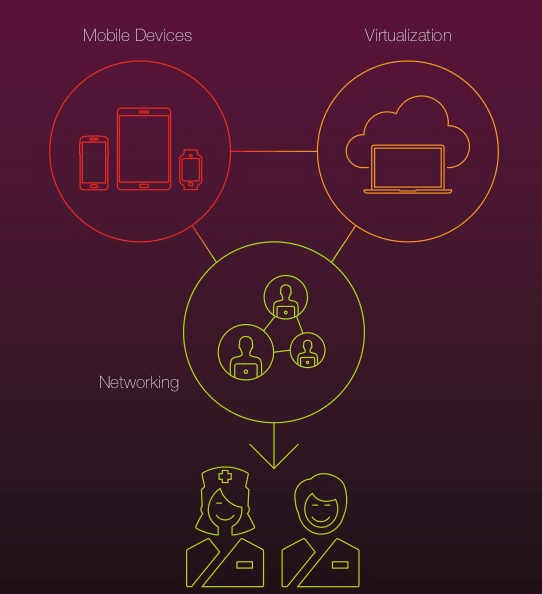
Over the past few years, Mobile health solutions has become an essential part of healthcare – making it easier to engage with patients, streamlining the clinician workflow, improving regulatory compliance and improving healthcare delivery.
In fact, 90 percent of healthcare professionals are utilizing mobile devices within their organizations to engage patients in their healthcare, according to a 2015 HIMSS Mobile Technology Survey. For IT departments in healthcare organizations, the biggest challenge now is finding the right combination of solutions and products that are the right fit, with the specific apps, embedded features, and security protections for a healthcare provider’s mobile strategy.
Given these overlapping and sometimes conflicting demands, the right mix of mobile devices, virtualization, and networking can combine and simplify many of the tasks healthcare workers tackle daily.
Here are four ways Samsung is leveraging mobile devices to streamline healthcare:
1. Supporting skilled caregiving (tablets)
In large senior living facilities, care providers visiting residents need fast, efficient ways to collect health data and update patient records in real time, right at the point of care. A small mobile device such as a smartphone or tablet preloaded with healthcare apps and sensors makes it possible to perform these tasks with ease from any location.
2. Simplifying dictation (virtualization and zero-clients)
Another healthcare challenge is the need to adopt EHR requirements in a way that keeps data safe and doctors on schedule. Traditional computer-on-wheels setups (COWs) and even laptops have proved bulky and difficult to use in high-traffic patient rooms.
Mobile devices are far more portable, but physicians have found it difficult to fully integrate dictation software on some mobile devices, and often return in frustration to manually entering handwritten notes at the end of their rounds. A better solution is running critical applications in the cloud and securely accessing them through zero-client displays installed in patient rooms and at hallway stations.
Physicians can log in anywhere, anytime to give dictation on a consistent interface. They also minimize the risk of leaving confidential information behind on the device, because all data is securely stored in the data center.
Zero-client displays have no installed software or operating system, which means they can’t be hacked, they consume less power, and they require far less support from IT. Virtualization can also be used for bedside computer access to verify that patients are taking the right medications at the right dosages.
3. Creating better signage (digital displays)
What about a hospital that’s still relying on traditional printed signs and bulletin boards to communicate with thousands of patients and employees? Information is likely to become outdated fast, and hallways and rooms can seem cluttered and uninviting. But if hospitals replace these outdated materials with integrated LED displays, they could offer personalized information and engaging content in patient rooms, provide wayfinding stations near elevators, install digital bulletin boards in staff lounges, and even offer daily menus in cafeterias.
In the process, they create a modern, friendly atmosphere, with content that engages patients and their families. On the administrative side, it’s easy to centrally update, manage, and coordinate information across the entire facility – freeing up busy staff, saving energy, and lowering printing costs
4. Navigating conferences (tablet apps)
Consider the challenge of hosting a huge annual medical symposium. Participants must be able to find their way around and select the most useful presentations, but lugging around the conference catalog and other materials can become an endurance event. If they’re on tablets, however, each participant can preload them with all the information, links, and apps they need to create schedules, connect with colleagues, receive CE credits for sessions, and even view live streams and ask questions in real time. This solution could also enable the conference to go paperless and lower printing costs.
To learn more, take a look at Samsung Business’s latest e-book “Mobile Technology is Making the Rounds.”

